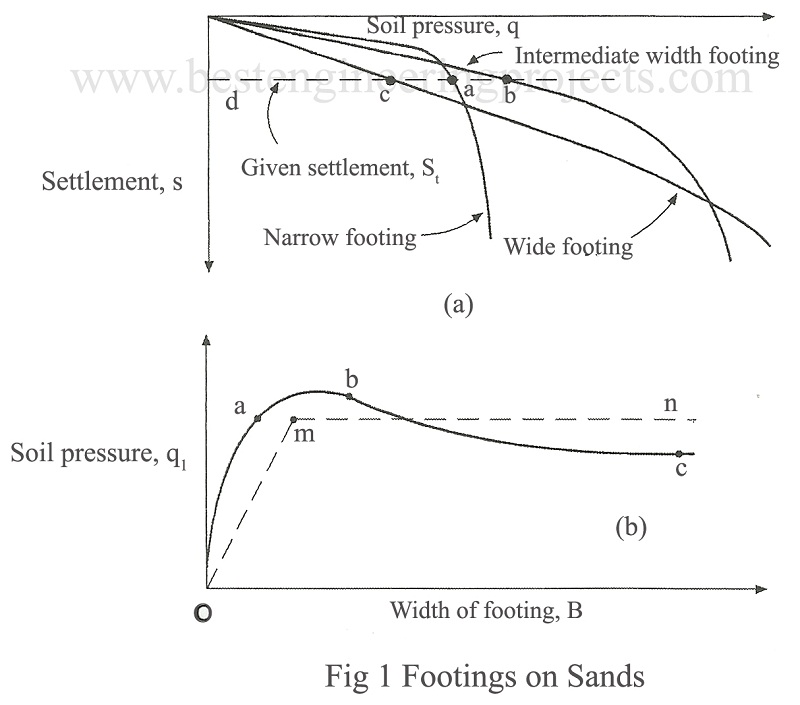The computation of the bearing capacity from field plate load test has already been discussed in the chapter of site investigation. Here, the discussion will be limited to the estimation of bearing capacity from the results of standard penetration test.
Cohesionless soil – In cohesionless soils, the bearing capacity is extremely high with respect to shear failure criteria. In sands, the shear failure criteria govern the capacity only in the case of very narrow footing located in loose sand below water table. In most of the cases the bearing capacity in sands is governed by settlement criteria.
Shear failure criteria – Teng has suggested the bearing capacity in sands for a strip, circular or square and raft foundation from the results of standard penetration tests. The proposed equations are as follows.
Strip footing – The bearing capacity of strip footing is given as:
qna = 0.0167N2BRW1 + 0.0277(100 + N2)Df RW2 ———- (1)
Square or circular footing – The bearing capacity of square or circular footing is given as:
qna = 0.011N2BRW1 + 0.033(100 + N2)Df RW2 ———- (2)
Raft foundation – The bearing capacity of raft foundation is given as:
qna = 0.02N2BRW1 + 0.06(100 + N2)Df RW2 ———- (3)
Where,
B = Width of foundation
N = Corrected SPT value
Df = Depth of foundation
RW1, RW2 = Water table correction factors
The unit of qna is in t/m2
Settlement criteria – In sand in most of the cases the bearing capacity is governed by settlement criteria. The design philosophy for footings on sands is explained below.
Typical load settlement relationships for footings of increasing sizes resting on a homogeneous deposit of sand of certain relative density are shown in Fig.1 above.
The load settlement curves show that the ultimate bearing capacity increases as the width of foundation increases. However, for a given permissible settlement, say S, the pressure required to cause it greater for footing having intermediate width than for the footing having larger width. The pressure corresponding to three widths narrow, intermediate and large are indicated in the figure by points a, b and c respectively. The curves also show that for the case of a small footing, a small increase in load may cause the footing to settle excessively and even lead to bearing capacity failure subsequently. While in the ease of larger footings, a small change in load does not have significant influence on the settlement value.
Footings on granular soils are proportioned commonly by the use of N values. Most of the methods discussed below propose empirical equations or charts to determine the safe bearing pressure for a specified maximum total settlement in terms of N Values.
